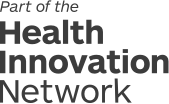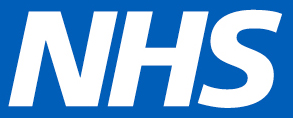Lean and Six Sigma are two methodologies that can be employed individually or together to achieve continuous business process improvement. While they share the objective of improving processes, they have distinct focuses and approaches:
- Lean aims to improve end-to-end flow, reduce waste, and optimize the breadth of a process.
- Six Sigma focuses on achieving an in-depth understanding of specific parts of a process to reduce variance and defects.
What is Lean?
Lean is an improvement approach developed by Toyota with the aim of improving flow and eliminating waste. At its core, Lean thinking focuses on delivering value to the customer by identifying and removing any activities that do not add value. This approach is applicable across various industries, including healthcare, where it can enhance patient care and streamline processes.
Lean efforts concentrate on optimising the right things, at the right time, in the right quantity, while minimising waste and remaining flexible to adapt to changes. It relies on the continuous identification and elimination of time-wasting activities, bottlenecks, and non-value-added tasks by people at all levels of the organisation.
TIMWOODS is a useful mnemonic that identifies the eight areas of waste that need to be eliminated. The example table illustrates the potential waste in a healthcare environment.

What is Six Sigma?
Six Sigma, initially used to improve manufacturing processes and reduce defects, has since been adopted in a broader business context. Originating at Motorola, Six Sigma focuses on enhancing quality while reducing production costs. In this methodology, a defect is defined as any process output that does not meet customer specifications.
The core of Six Sigma is the DMAIC cycle, which stands for Define, Measure, Analyse, Improve, and Control. This continuous improvement cycle uses data to identify and address the root causes of process variations and defects.
What is Lean and Six Sigma and what are the key differences between them?
| Lean | Six Sigma |
| Speed and efficiency by identifying value add and eliminating waste | Reducing variation, improving quality and stability by using a structured DMAIC approach |
| Realise more with less and at low costs
In a Lean process there is no ‘waste’ in terms of what is not valuable to the customer Activities are error proof, and defects are prevented. Workspace lay-out is optimal and easy to understand, everything is on-hand and easy to find |
Realise lower variation in a process/product quality
Six Sigma is a highly disciplined, quantitative, data-driven, fact based methodology focused on developing and delivering near-perfect products and services Six Sigma is a statistical measure of how far a given process deviates from perfection |
| Voice of the customer
Business processes are viewed ‘end to end’ from the customers’ perspective – focus on what adds value to the customer. Any activity in the workflow that adds time, effort or cost but does not create value to the customer is considered as necessary non value add and/or non-value add. These are considered two types of waste |
Voice of the customer
Like Lean, Six Sigma places the customer at the centre of process improvement to ensure customer’s needs are satisfied. With the voice of the customer as a starting point Six Sigma focuses first on reducing process variance and then on improving the process capability. |
| Improve the whole system
Lean focuses on the end to end process and does not typically seek to improve the activities that create existing value for the customer. Instead Lean seeks to identify and reduce waste to its lowest level by eliminating non value added activities (NVA) and minimising necessary non value added activities (NNVA) |
Various diagnostic techniques
Six Sigma projects focus on improving the root-causes of the problem, instead of improving the symptoms. Diagnostic techniques: Run and Control charts, ‘As-is’ process map, Critical to Quality Tree, Pareto Chart, Flowcharts, Histogram, Cause-and-Effect Diagram, Hypothesis Testing, etc. |



